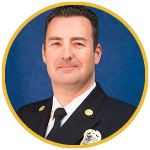Sunday, March 13 is Daylight Saving Time. It’s time to “spring forward” one hour. You know what that means, change your clocks, and change your batteries! While phones, computers, and tablets may change themselves, it’s up to you to keep yourself and your family safe by changing your smoke alarm batteries.
Working smoke alarms save lives, that tell-tale beeping can get everyone out safely and avoid tragedy.
Three out of five home fire deaths resulted from fires with no smoke alarms or no working smoke alarms. This is especially important if someone in your home smokes. Fires caused by smoking materials like cigarettes are the leading cause of fire-related deaths; accounting for 23% of all fatalities (Source: NFPA, U.S. Home Structure Fires).
An alarm should be installed on every floor of your home, in every bedroom, and outside of all sleeping areas. Here are some tips for installing smoke alarms:
• Best place to mount your smoke alarm is on the ceiling
• Keep smoke alarms at least 4-6 inches away from the nearest wall
• Always test your newly installed smoke alarm
• If you cannot mount the alarm on the ceiling, install it high on the wall 4-12 inches from the ceiling
It’s simple: the more alarms you have, the greater your chances are of surviving a fire. Don’t skimp on smoke alarms around the home! However, just installing a smoke alarm is NOT enough. It needs to be tested monthly and the batteries changed every year. You should also replace your smoke alarms every 10 years.
As well as working smoke alarms, every household should have an evacuation plan. Practice it! Make sure everyone knows how to get out and where to meet. Never go back inside a burning building! If someone is missing, inform the dispatcher when you call 911. Firefighters have the proper training to perform rescues.
A working smoke alarm can decrease a family’s risk of dying in a fire by nearly 50 percent. Batteries from household smoke alarms may be recycled at your nearest household hazardous waste recycling facility.
Get a list of household hazardous waste locations and additional fire safety information here:
https://sbcfire.org/homesafety/
https://sbcfire.org/hhw/


